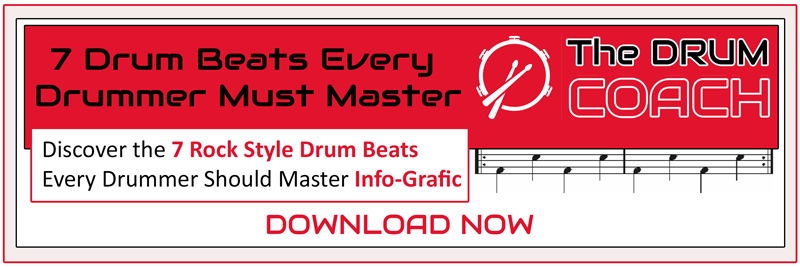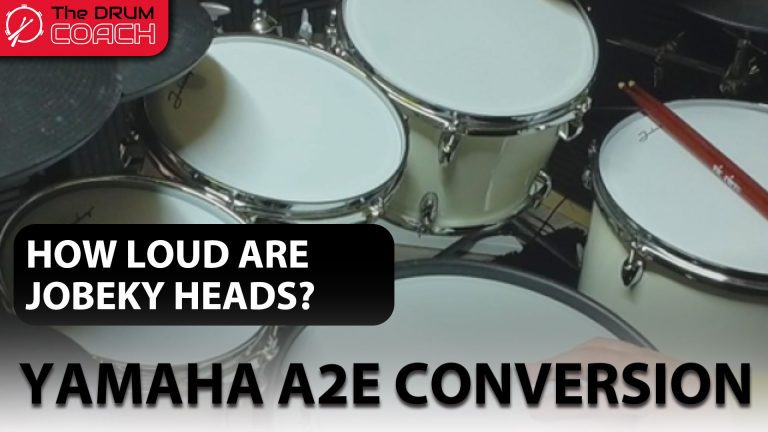Holding the drumsticks is like any other aspect of drumming. It takes time and everyone develops their own technique over time. Of course, as you learn to play the drums, in the beginning, you also learn how to hold drum sticks. But holding the drums sticks isn’t any different from learning how to play the drums. Meaning, that in the beginning, you’re going to make mistakes, and it’s going to feel uncomfortable too.
But as with anything else, over time you will get the hang f it as you develop your drumming. But to get you started, let’s list the basic steps involved in holding the drumsticks. And then we will go over them and describe them in various ways. So you get to see the process or method from many different perspectives.
To get you started in the fastest way possible. Try these steps beginning with your dominant hand.
- Hold the stick between your thumb and first (index) finger.
- Curl your other fingers around the stick for support, as if to grip the stick.
- Don’t hold onto the sticks too tight. You should be able to feel some movement as the stick rests between the fingers and thumb.
- Loosen the grip and loosen your wrists and arms.
That’s it. Now try doing the same with your other hand.
This is the most basic way to describe how to hold drum sticks. and although not technical and leaves the possibility to make mistakes. It is good enough to get you started playing the drums and learning your first rock beat.
How To Hold Drum Sticks – The Starting Position
As you hold the drum sticks using the method suggested above. You need to assume what I call the starting position. That is, the resting point before you begin to play the drums. To do that follow these simple steps:
- Hold the sticks with the tips pointing close to the center of the snare drum head.
- Keep your wrists relaxed and use your fingers to control the sticks. Rest the sticks loose on the drum head.
- Angle the sticks (tips) towards each other (inward at the tips). You may have to move your hands outward whilst placing the stick tips resting in the center area of the drum head.
- Use a light touch and don’t grip the sticks too tight when you begin to play.
Assume this position before striking the drums, but that is the next step.
How To Hit The Drums
Now, as you assume the starting position. (from this point I am going to describe a motion that you perform with your arms and wrists. and as you go through the motions, bring the sticks with you).
You should still hold the stick loose in your hands. But tight enough to control them and stop them from falling from your hands. As you do this, you begin to lift the stick off of the drum head.
With that in mind, let’s give it a go.
1. Starting with your right (or dominant) hand, and keeping your wrist in line with your forearm. Lift your right arm, bending it at the elbow, and lift your whole forearm, wrist, and hand upward away from the drum. Lifting the drumstick at the same time. Try to keep everything in a straight line (forearm, wrist, and stick). But lose.
2. Once you reach a 45% angle with your forearm, loosen your wrist and move your hand down as you flick your wrist upward. Then flick downward as you move your forearm downwards. As you do this, the stick moves downward and hits the drum.
Note: The wrist moves upwards as you reach the 45% angle and then immediately moves downward. With the forearm towards the drum.
Before moving on, re-read these last two action steps. So you begin to get a clear image in your mind of what the motion entails.
A Closer Look At How To Hold Drum Sticks
Now let’s take a closer look at this technique from another angle to develop a basic way of how to hold drum sticks. The images below top left (1), top right (2), bottom left (3), and bottom right (4), describe another way of gripping the sticks.

Start by placing one of your sticks across the palm of your hand. We will use the right hand for the demonstration but the same applies to the left hand. Make sure that the butt or the thick end of the stick is overlapping your palm (wrist joints) by about 1 inch. As illustrated in the first image (top left).
Then move your thumb across so that it is touching the stick (top right in the image). Now wrap your other 4 fingers around the stick (see bottom left image). When you have done this, turn your whole arm, hand, and wrist so that your thumb is on top as shown in the bottom right image.
From this point, the process is as before mentioned:
- Stick close to the center of the drum head, starting position.
- Stick up to 45%,
- Slight upturn then downturn of the wrist, (a kind of flick)
- Stick halfway down,
- Stick hits the drum head,
- Stick bounces off the drum head,
- Repeat 2 – 5
And that’s it. There is nothing more to it. Yet, having said that, it will take practice like anything else in drumming. Muscle memory needs programming into your conscious and subconscious minds. Before it can become second nature and automatic, or something you don’t need to think about.
You should develop these movements over a lifetime of learning your drumming skills. But we need to start somewhere. This is an ideal place to start. But don’t get too fixated on whether you are doing it the correct way or not. As I said, this should be developed over a long period of time. And so, don’t forget to give yourself a break and move past how to hold drum sticks to learning how to play the drums. Along with some basic drumming theory.
Two Kinds Of Grip
There are two kinds of grip that a drummer can use but I have only covered the matched grip. Meaning that both hands are used in the same exact same way. Hence, matched grip. The traditional grip would need a video to show and is something I never practiced. In most instances, the matched grip is enough to get you started.
Do you have any stick-gripping experiences to share? If so, I would love to hear them. So don’t forget to leave a comment and help another drummer get to grips with griping the sticks.




